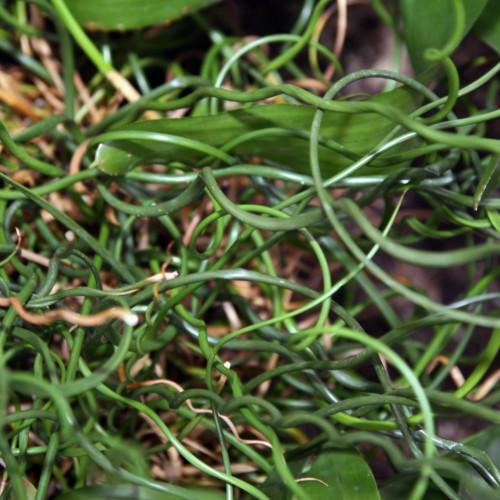
corkscrew rush
Juncus effusus f. spiralis
Cycle:
Perennial
Watering:
Frequent
Hardiness Zone:
4 - 9
Flowers:
Flowers
Sun:
Full sun
Growth Rate:
Low
Maintenance:
Low
Drought Tolerant:
Yes
Salt Tolerant:
Yes
Care Level:
Medium
watering
The Corkscrew Rush (Juncus effusus f. spiralis) is an aquatic plant that loves lots of moisture. It requires a minimum of 1.5 inches of water per week, but will benefit from more. If the plant is in a pot, water it when the surface of the soil is dry to the touch. If the plant is in a pond, the water should be kept at a depth of at least 4 inches. Depending on the size of the pond and the temperature, it's possible to need an inch or 2 of additional water each week. Make sure to never let the pond dry out completely. For best results, the water should be changed at least once every 2 weeks.
sunlight
Corkscrew rush thrives in full sun and requires 6-8 hours of direct sunlight each day to remain healthy. It should be placed in an area that gets the most amount of sunlight available since too little exposure to direct sunlight can lead to stunted growth or even death. To achieve maximum growth, they need to be placed in a location that receives direct sun for at least 6 hours per day during the growing season, from late spring through early fall. In the winter months when there is less sunlight, this plant species can survive in varying light conditions, though less than ideal, as long as there is some exposure to the sun.
pruning
Corkscrew rush should be pruned in spring after new growth has clumped up. A pruning can then be done to maintain a desired shape. Remove any dead or damaged stalks and snaps the dead stems off at the base. Pruning also encourages branching and creates a more full plant look. For a denser and neater appearance, pinch off the tips of a few stems in the clump to create lateral branching. Ideally, the plant should be pruned annually to keep it a manageable size and to promote fuller growth. Pruning can be done selectively, or a light trim to the entire plant can be made if desired. In the early spring, a more radical pruning may be needed. This will help keep the plant within desired size limits. Remove up to 1-third of the plant with pruning shears or loppers.
